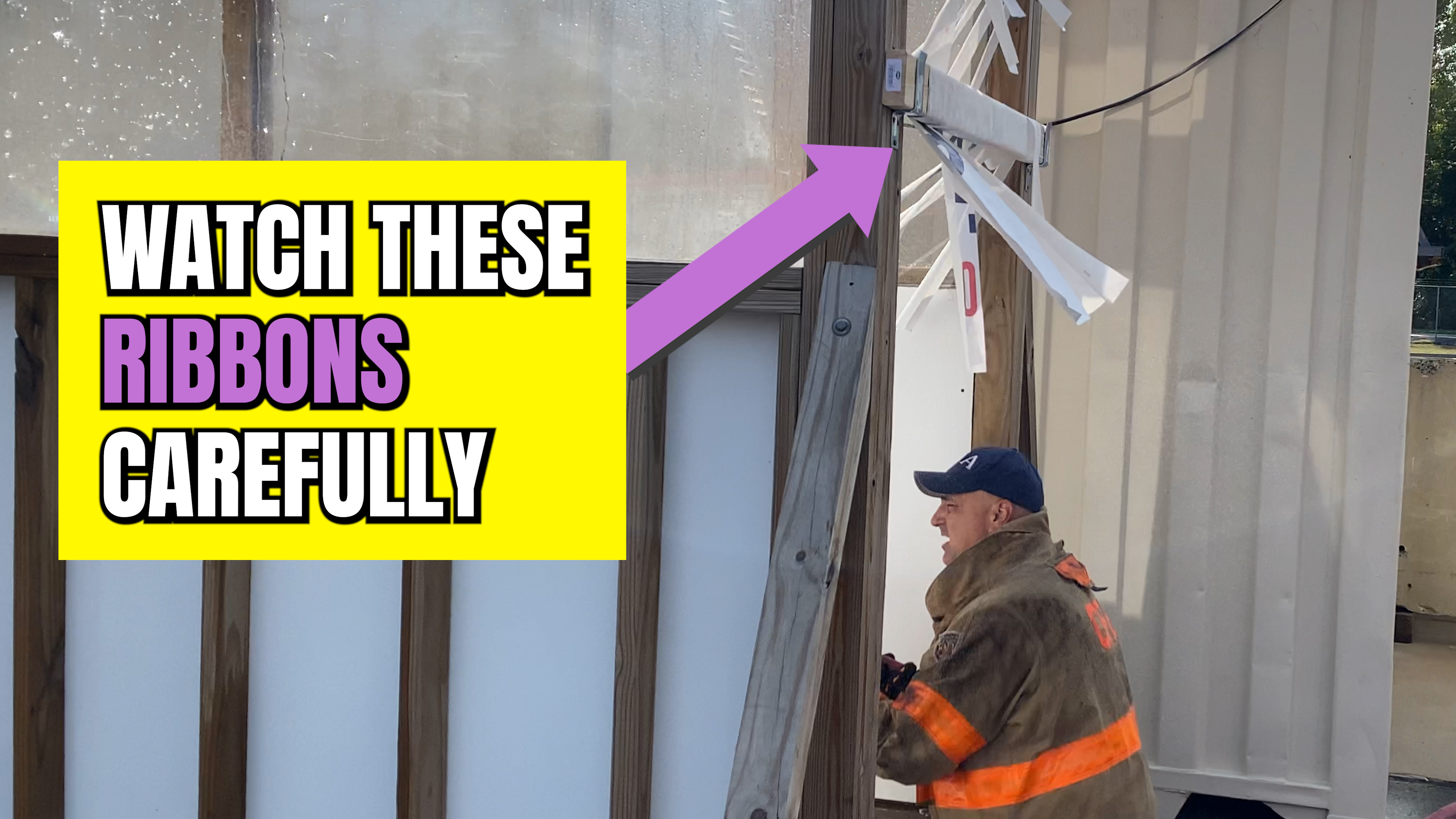Summary: The water mapping prop at Connecticut Fire Academy in Episode 11 of Fully Involved shows how different nozzle streams interact with room ventilation conditions and affect air movement. By using streamers to visualize airflow, the prop demonstrates that fog patterns and vigorous whipping of smooth bore nozzles entrain more air than steady, straight stream/smoothbore streams. This is important insight when operating in vent-limited and partially ventilated environments.
What the Water Mapping Prop Reveals About Stream Air Movement
If you've ever wondered just how much air your nozzle stream pulls into a fire room, the water mapping prop in Fully Involved Episode 11 gives you a clear answer. No guesswork, no theory, just real-world visual proof.
The Setup: Hallway, Doorway, and Streamers
Program Manager Brian Hurst explains that in this test, a hallway is partially sealed off from the fire room, with a door open at the far end to create a directional flow path. Streamers (aka ribbons) are hung in the doorway to make air movement visible. This simple setup becomes a powerful tool to reveal what different nozzle streams are really doing, especially in vent-limited environments.
Combination Nozzle (Fog Pattern): Big Air Movement
First up, a 30-degree fog pattern. As soon as the nozzle is opened, those streamers whip inward, pulled toward the open door. That’s air entrainment in action. It shows that the fog stream is drawing in a large volume of air, air that, in a live fire scenario, would be rich in oxygen and potentially accelerate fire growth.
Smoothbore Stream: Controlled and Clean
Then the test repeats with the combination nozzle in straight stream mode, followed by a smoothbore nozzle. This time, the streamers budge comparatively less in both tests compared to the combination nozzle's fog pattern. The smoothbore and straight stream combination nozzle push water into the space without significantly disturbing the air, meaning less risk of feeding the fire unintentionally.
Why It Matters: Visual Proof for Tactical Decisions
This prop isn't just for show, it's a real-time training tool. It helps firefighters see how stream choice affects interior conditions. In vent-limited fires, every bit of extra air can tip the balance. The water mapping prop makes it obvious that nozzle selection directly influences that balance.
Bonus: Door Control Changes Everything
They also demonstrate what happens when the door is closed during the test. With that flow path shut down, air comes back at the firefighter, who is now "working in the exhaust". It's a quick but clear example of why door control and stream choice go hand-in-hand.
Takeaway: Use the Right Tool for the Fire You Have
This isn’t about proving one nozzle is “better.” It’s about understanding what each stream does and when to use it. The water mapping prop makes those effects visible, giving you a better handle on what your water is really doing to the fire, to the air, and to the room.



Comments